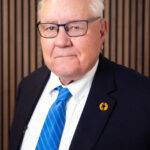
S corporations: Trusts Are Trickier Than You Might Imagine
Among the many foot faults with S corporations are the myriad of seemingly disconnected rules when trusts become shareholders. There are only a select few types of trust that are eligible to hold shares in S corporations:
- Grantor trusts during the grantor’s lifetime and for two years thereafter.
- Deemed grantor trusts, during the beneficiary’s lifetime and for two years thereafter.
- Testamentary trusts, for two years after funding.
- Qualified Subchapter S Trusts (QSST requires election).
- Electing Small Business Trusts (ESBT requires election).
- Voting trusts.
QSST and ESBT Seem to Have the Most Hazards
Of these trusts, the QSST and the ESBT seem to have the most hazards. In addition to some rigidly prescribed rules, these trusts require special elections to be filed by the proper party. Complicating factors further, a trust may change its categorization upon certain events such as the death of a grantor or a beneficiary. For example, assume a shareholder owns S corporation stock through a grantor trust. That trust is practically unlimited with respect to distributions as long has the grantor is alive, assuming the grantor is a U.S. citizen or resident. However, on the date of the death of the grantor the trust now changes its status for S corporation eligibility purposes. The trust is now considered to be part of the decedents estate and has a two year period off eligibility, without needing to meet any other qualification. However, if the trust at the end of the two years is not a deemed grantor trust, for the benefit of one of the decedent’s beneficial successors in interest, it now needs to determine if it can qualify as a QSST or an ESBT.
Even if the trust does qualify for one of these categories, somebody needs to file an election for the trust to attain its desired classification. To complicate things further, the person who must file the election depends upon whether the trust will be a QSST or an ESBT. For QSST status, the beneficiary must file the election. In contrast the fiduciary or trustee must file the appropriate election for an ESBT. In either case the proper person must file the within two months and the 16 days after the date the trust needs this qualification to be an eligible shareholder. In the case of a grantor trust or deemed grantor trust the deadline is two years plus two months plus 16 days after the death of the former shareholder.
Letter Ruling 202310003 illustrates this predicament
A shareholder was the beneficiary of a QSST. The beneficiary died, but the trust still owned the stock. A QSST must have a living beneficiary. Therefore this trust was no longer a QSST. After the death there were multiple beneficiaries, which rendered the trust ineligible for QSST status but eligible for ESBT status. The trust distributed the shares to the individual beneficiaries and then dissolved. However, the dissolution did not occur within the two year period after the former shareholder’s death. Therefore, for the period between two years after death and the dissolution of the trust, there was an ineligible trust holding shares.
This same corporation had one other shareholder, who had transferred shares to a revocable trust. A revocable trust is a grantor trust, so there was no threat to the corporation’s S status. However, this shareholder also died. The trust continued to be eligible for two years after the death of this shareholder. This trust also met the qualifications as an ESBT, but the trustee failed to file the proper election within the prescribed time period.
The IRS issued the ruling under Code Section 1362(f), which provides inadvertent termination relief for corporations that have unintentionally violated one or more of the S corporation rules. Here we see two violations of the same rule by the same corporation by two shareholders on two different dates. The IRS allowed to corporation to keep its election in effect, so it might appear there was no foul and thus no harm.
However, consider these issues:
- The user fee for the Letter Ruling is $38,000.
- The preparation fee for the ruling probably exceeds the user fee.
- The attorney or accountant who should have advised the client of the necessity for the ESBT election may have committed malpractice.
- Although the IRS routinely grants these rulings, there is a period of uncertainty while the IRS is processing the request.
The good news is that the corporation was able to continue its S corporation status. However, proper management of the trusts could have saved considerable time, money and stress. It may be trite, but the old adage that “there is never time to do it right the first time but always time to do it twice” still rings true.

